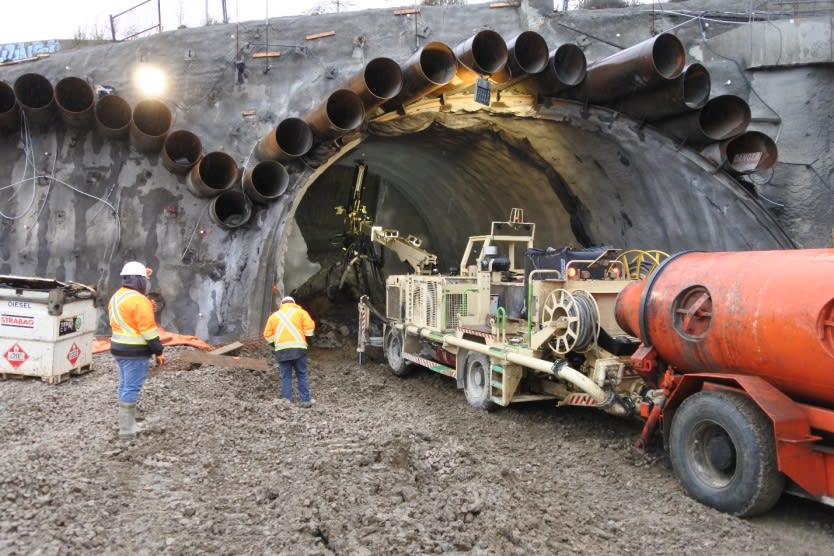New details on GO Expansion projects happening now
Metrolinx holding public meetings about the next phases of GO Expansion projects - get involved.
Feb 11, 2020
GO Transit is growing by leaps – so you’re bound to have questions.
Across a great number of routes, and touching thousands of customers, planned changes – as well as advances being catalogued constantly – mean it’s a bit difficult to keep track of all the projects on the GO.
But we’ll try to flesh things out.
This month, Metrolinx will start public meetings to talk about the next phases of ‘GO Expansion’ projects across the region. And to help get the conversation started – and to whet the appetite of those customers and community members looking for more details – we’ve created this primer.
The GO Expansion Program will provide faster and more convenient transit for the Golden Horseshoe Region. New train technology on the Barrie, Lakeshore, Stouffville and Kitchener lines will accommodate faster trains offering all-day trips, going two ways, as quickly as every 15 minutes. Milton and Richmond Hill lines will also be upgraded to offer up to 30 per cent more service.
The GO expansion program is already underway incrementally. Services have been increased by 33 per cent – an increase of more than 400 GO train weekly trips – in the past two years.
The tracks at the Davenport Diamond. The lines are about to see major changes. (Metrolinx photo)
Here’s a look at it, by-the-numbers:
- 10 stations under construction (Bramalea, a new Bloomington, Weston, Rutherford, Agincourt, Milliken, Unionville, Cooksville, Kipling, Union Station)
- 29 stations slated for early station improvements (customer service and safety improvements, including PA systems, platform edge tiles, display boards)
- 3 corridors with track work underway (Stouffville double track, Barrie double track, Hamilton Junction track and signals in partnership with CN)
- 3 grade separations (Davenport Diamond, Steeles Avenue, Rutherford Road)
- 4 tunnel/bridge expansions (401/409 Tunnel expansion, Centennial bridge in partnership with CN, John Street in partnership with CN, and Desjardin Canal Bridge in partnership with CN)
Currently, GO ridership is at record levels and we are now one of the fastest growing transit services in North America. Moving forward with GO Expansion will leverage our existing network of over 400 km of railway, and unlock the potential of the region to provide a range of benefits and opportunities.
Some of those benefits include:
- Added capacity
- Reduced congestion
- Regional Development
- New and improved regional connections
- A healthier region with a safer transportation network
Beginning Feb. 18, Metrolinx will be hosting 10 public meetings across the region to talk about GO Expansion and the OnCorridor program, the next phase of work. The OnCorridor works represents all the work that is required to enable the service levels identified in the GO Expansion Full Business Case.
GO Expansion has been much talked about, including during regular Metrolinx community town halls. Seen here is a meeting held earlier this month (February) in Burlington. (Metrolinx photo)
The Plans Across the Region
In order to meet these improved service levels, Metrolinx is completing five GO Rail Transit projects. Here’s how they look:
New Tracks & Facilities Transit Project Assessment Process (TPAP)
The New Track and Facilities Project will build new infrastructure along various rail corridors, that will enable Metrolinx to deliver targeted service levels. This ‘TPAP’ will include: new tracks and switches within existing Metrolinx rail Rights-of-way (ROW), modifications or upgrades to existing tracks within existing Metrolinx rail ROW, three new layover/storage facilities, and electrification of a portion of the Richmond Hill rail corridor.
A TPAP was completed for the GO Rail Network Electrification Project in December, 2017. The purpose of the project was to study the impacts of converting GO-owned rail corridors from diesel to electric propulsion. This included identifying traction power supply and distribution infrastructure, bridge modifications, and other ancillary works.
An Addendum to the GO Rail Network Electrification Environmental Project Report (EPR) is now being completed to assess additional electrification infrastructure required for new tracks and a layover proposed across various portions of the GO network that were not previously examined as part of the 2017 EPR.
Scarborough Junction Grade Separations TPAP
The Scarborough Junction Grade Separation Project will accommodate increased service on the Stouffville and Lakeshore East lines through infrastructure improvements at the Scarborough Junction. These improvements will reduce train and traffic conflicts, while maintaining pedestrian access. The project will address these key objectives and facilitate the GO expansion program, including the construction of the previously approved new tracks.
Stouffville Grade Separations TPAP
The Stouffville Grade Separation Project will accommodate the expansion of the Stouffville rail line through grade separations or road closure at seven crossings. These improvements will reduce traffic conflicts and enhance safety. The project will facilitate the GO expansion program, including the construction of the previously approved new track.
The GO Expansion program is set to become one of the biggest transit infrastructure builds in Canada. (Metrolinx photo)
Network-Wide Structures Project
Through the Network-Wide Structures Project, a number of grade separations and crossing improvements have been proposed along various rail corridors, and this includes two grade separations along the Barrie Corridor; the McNaughton Grade Separation in the City of Vaughan and the Wellington Street East Grade Separation in the Town of Aurora.
The GO Expansion program is set to become one of the biggest transit infrastructure builds in Canada. The scope of the work is massive, but the benefits are even more monumental as we look to change the way people use transit by providing more options and delivering service people can use to get to where they need to go.
For more information, or to attend a meeting in your community, please click right here.
by Georgina Collymore Metrolinx senior communications advisor
